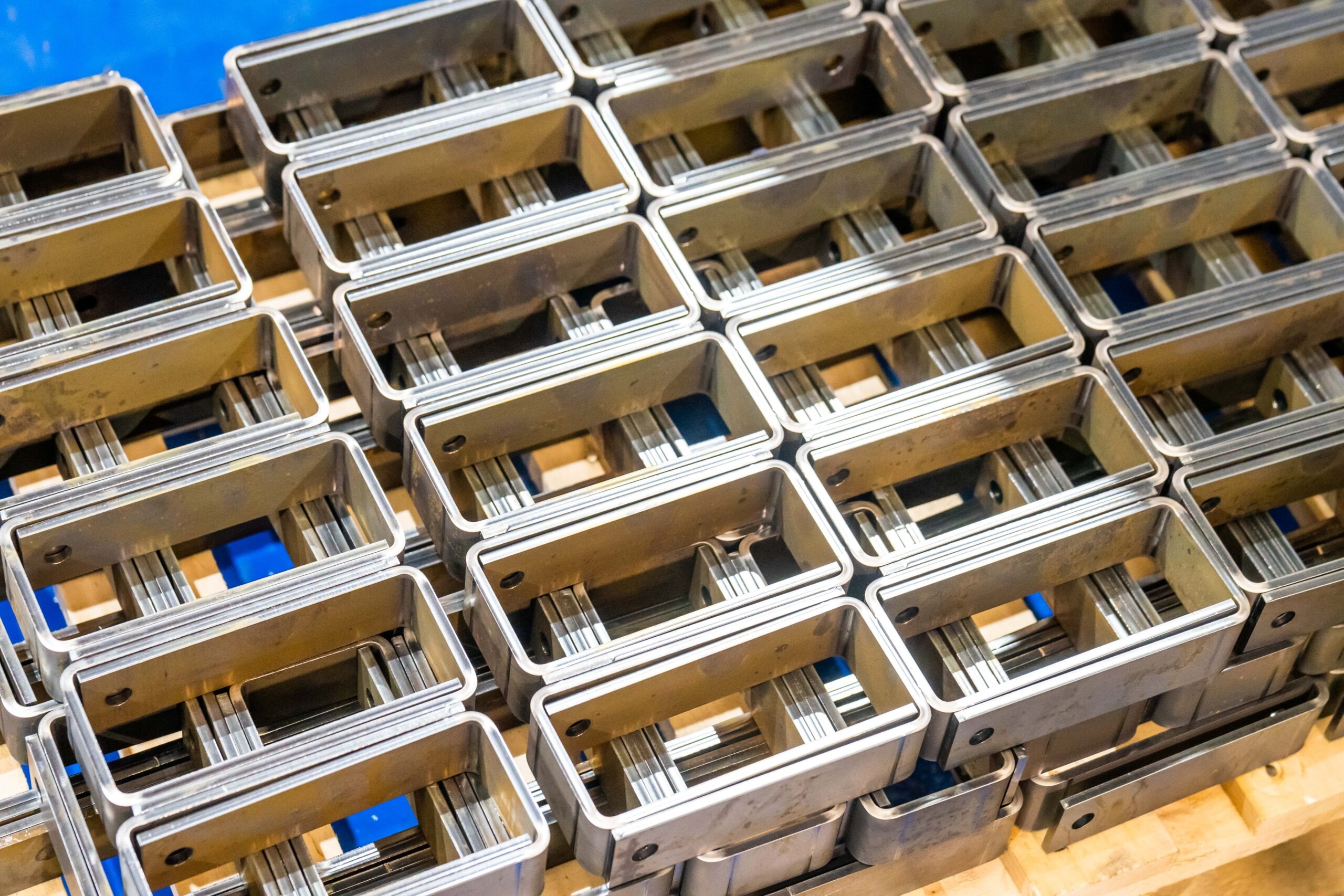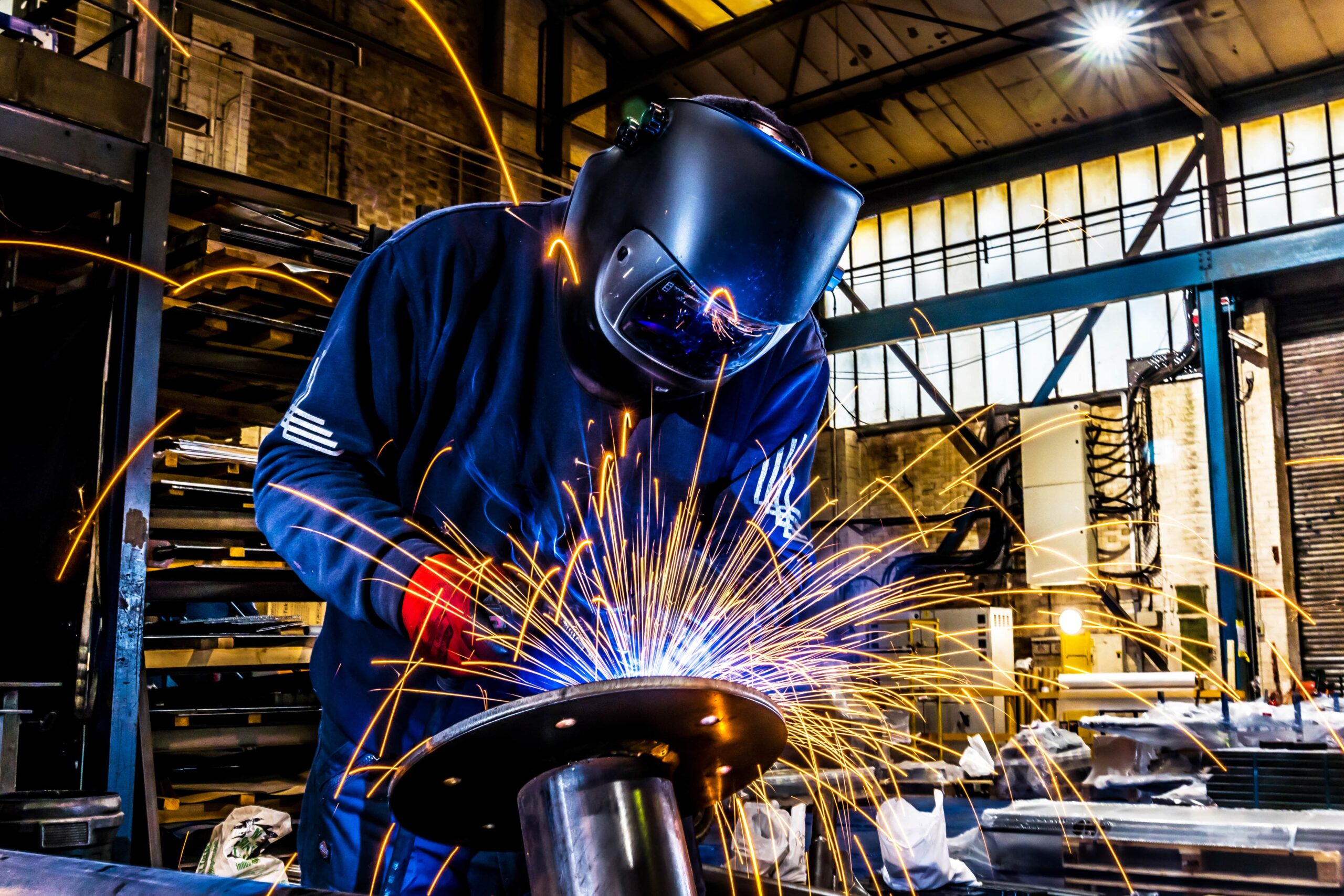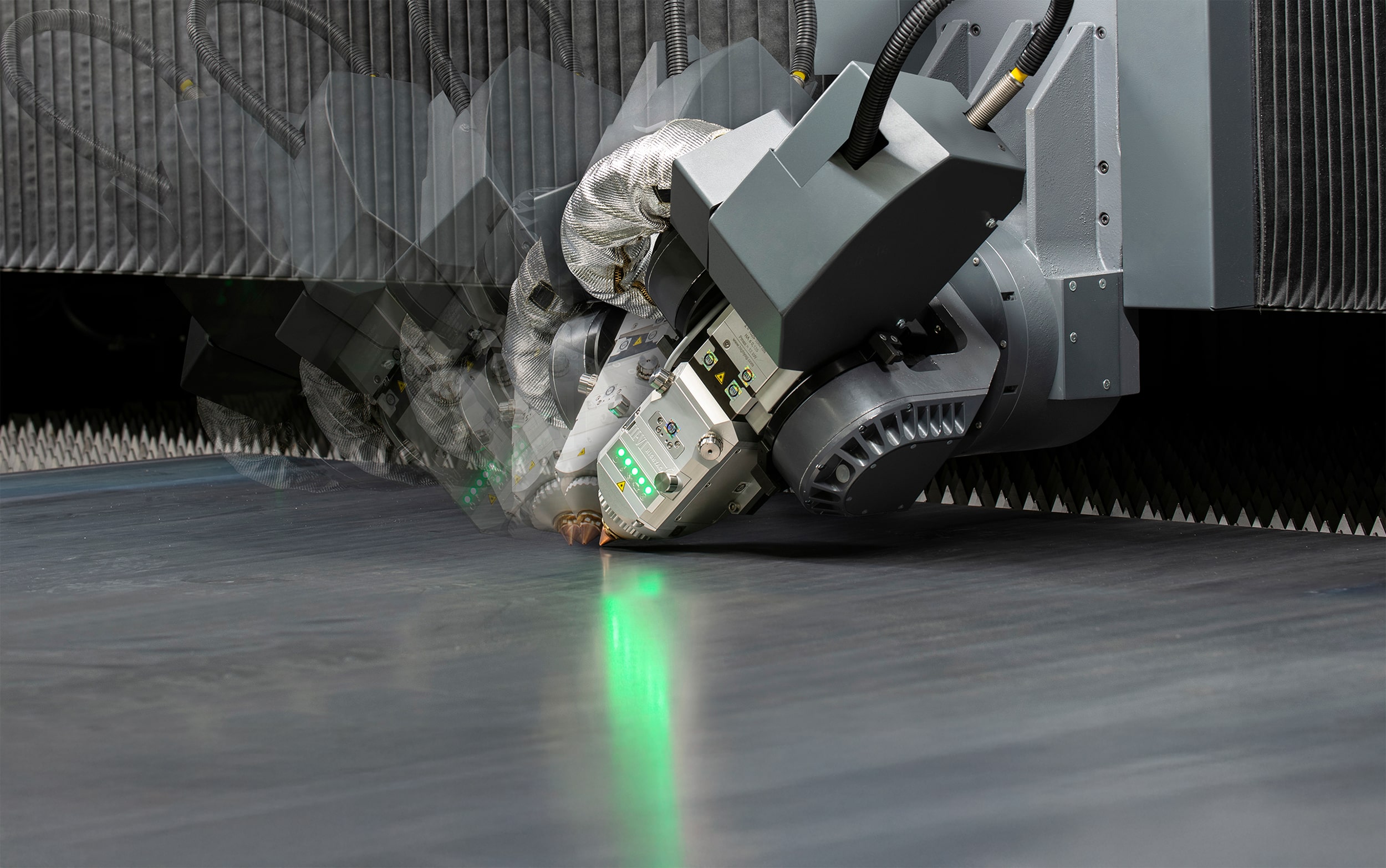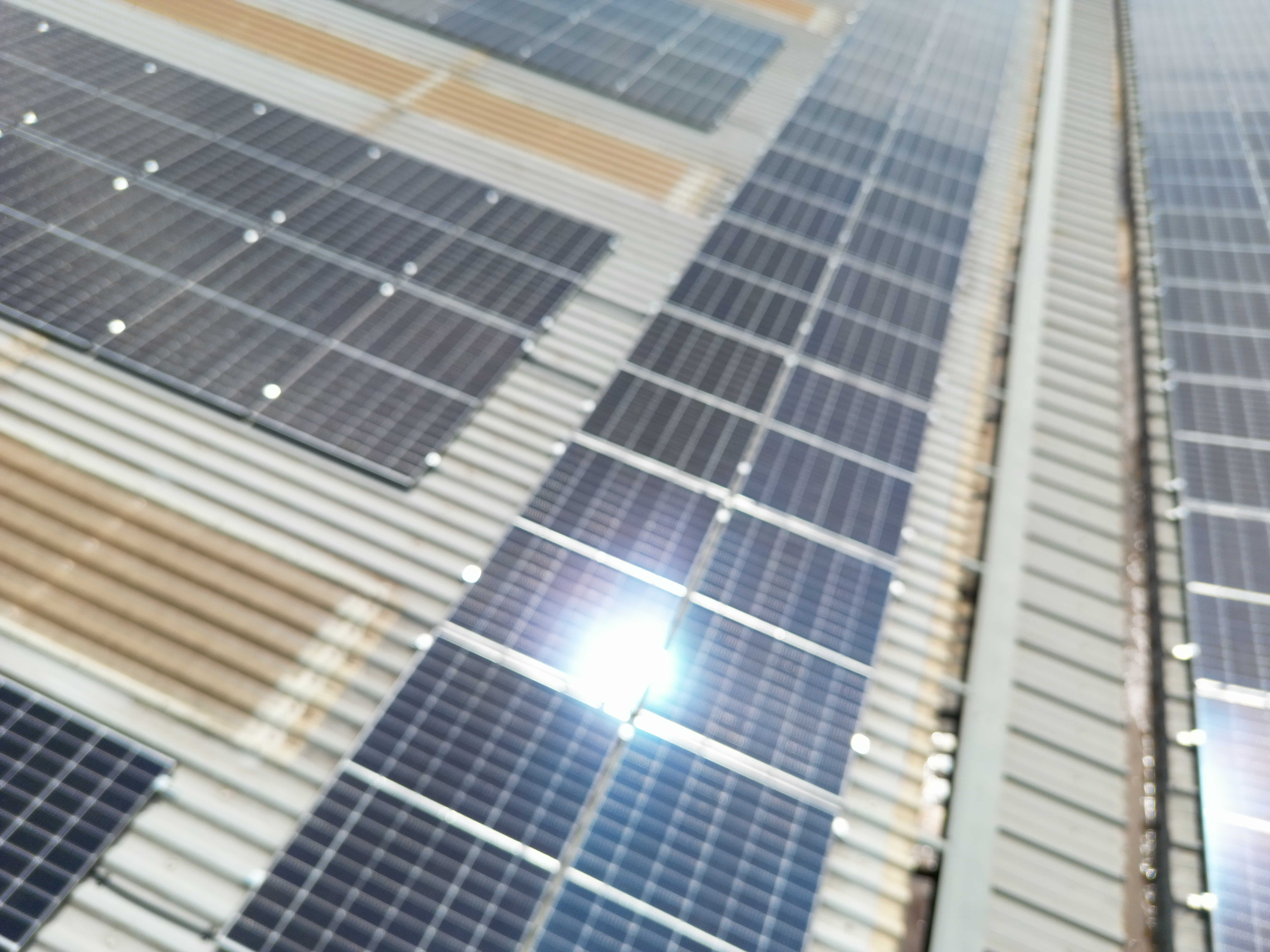There are many factors that can affect laser cutting quality; the machine, the operator and material can all have a bearing on quality of the cut edge. However, the most critical parameters to laser cut quality are material thickness and material type.
Material Thickness
The cut-edge quality achievable with laser profiling depends on the type of material and the thickness. As the thickness increases the striations on the cut-edge become more prominent.
Striations are regular lines on the cut-edge where the molten zone meets the cool zone, which lowers the quality of the surfaces produced. The thicker the material the more pronounced the striations are, for example, at the very top of the thickness scale for laser cutting stainless steel the following striations are left by CO2 lasers on 25mm stainless steel.
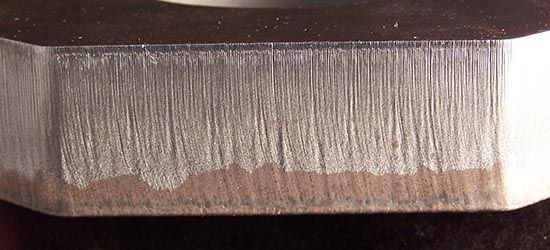
These striations affect the tolerance achievable. For example, in steel less than 1.0mm thick, we would offer +/- 0.12mm, in 10mm steel the repeatable tolerance would increase to +/-0.25mm and mild steel at 20mm thick we would be maintaining +/-0.75mm tolerances.
Laser Power
One way to improve the effects and reduce the appearance of striations of thicker sheets of metal, more powerful laser machines can be used. Using a higher powered laser enables the beam to cut through thicker sheets of metal easier and thus produces a better edge quality compared to less powerful counterparts.
It is for this reason that here at Charles Day, we have committed to a multi-million pound investment program over 2 years to invest in 4 brand new laser machines, including 2 x 6kW CO2 and a 6kW fibre laser. Ensuring we provide the best possible cut quality even of thicker sheet/plate sizes.
Laser Technology
The recent improvements in fibre-delivered, solid state laser technologies have stimulated competition with the well-established CO2 laser cutting process. Fibre lasers provide considerably faster cutting speeds compared to their CO2 equivalents while maintaining equal cut edge quality, in terms of nominal surface roughness.
However, the cut edge quality noticeably degrades with the sheet thickness. For this reason, typically we don’t recommend using fibre lasers for sheet thicker than 8mm.
Material Type
Material type can cover a large remit of different factors, the most obvious is the type of metal itself. Different metals possess different properties and so each react differently when being laser cut.
The composition of metals can have a profound effect on the cut edge quality, levels of carbon, manganese, silicon, phosphorus and sulphur can all have a bearing on the surface quality provided by laser cutting. For example, the higher the carbon content in mild steel the harder the cut edge will become.
Material Quality
Laser profiling is more reliant on a consistent surface quality that other cutting methods. The surface finish quality of the sheet can drastically affect the quality of the cut. We recommend that steel should be clean, pickled, rust and oil-free.
Low-grade steels represent a considerable problem for laser cutting. The impurities within these low grades can be highly reactive to the thermal cutting process, especially if using oxygen assisted laser cutting.
Hot rolled steel can also prove to be problematic for laser cutting due to its surface scale. The surface can melt in with the metal, creating a low quality cut finish. If the surface is not smooth and free of imperfections, the laser focus can be altered, affecting the cleanness and quality of the cut.
In an effort to produce steel sheet that is perfectly suited to laser cutting, many steel mills now offer laser grade laser ready steel. These materials have low impurities, guaranteed flatness and aim to provide the best quality laser cut profiles.
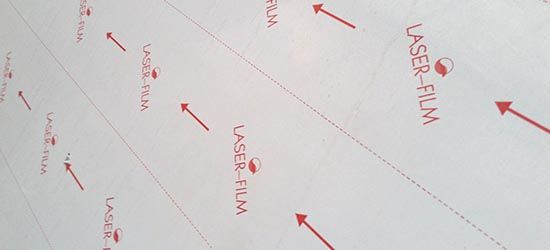
According to the TWI, who carried out tests of the effects of steel composition on the laser cut edge quality of carbon and C-Mn steels, found that:
The effect of material composition and material surface condition had a greater influence on overall laser cut quality than the combined effects of the laser cutting machine and operator. The range in cut quality for a series of different material compositions was twice that found with the same material processed by different operators on different laser cutting machines.
Ensuring you get the best laser edge quality
When it comes to providing you with laser cut profiles, we always ensure to use sheet and plate that is suitable for laser cutting.
However, if you are providing your own free-issue material, please ensure that it meets the requirements set out above, namely it needs to be: Clean, Rust free, Oil free, Flat and Free from surface impurities – such as mill scale etc.
If laser cutting your required material in the required thickness will not produce a cut edge of sufficient quality, we can recommend an alternative cutting method. Due to the fact we have 4 different profiling methods available under a single roof (laser, waterjet, flame and plasma), we can offer alternative methods which may suit your needs better.
